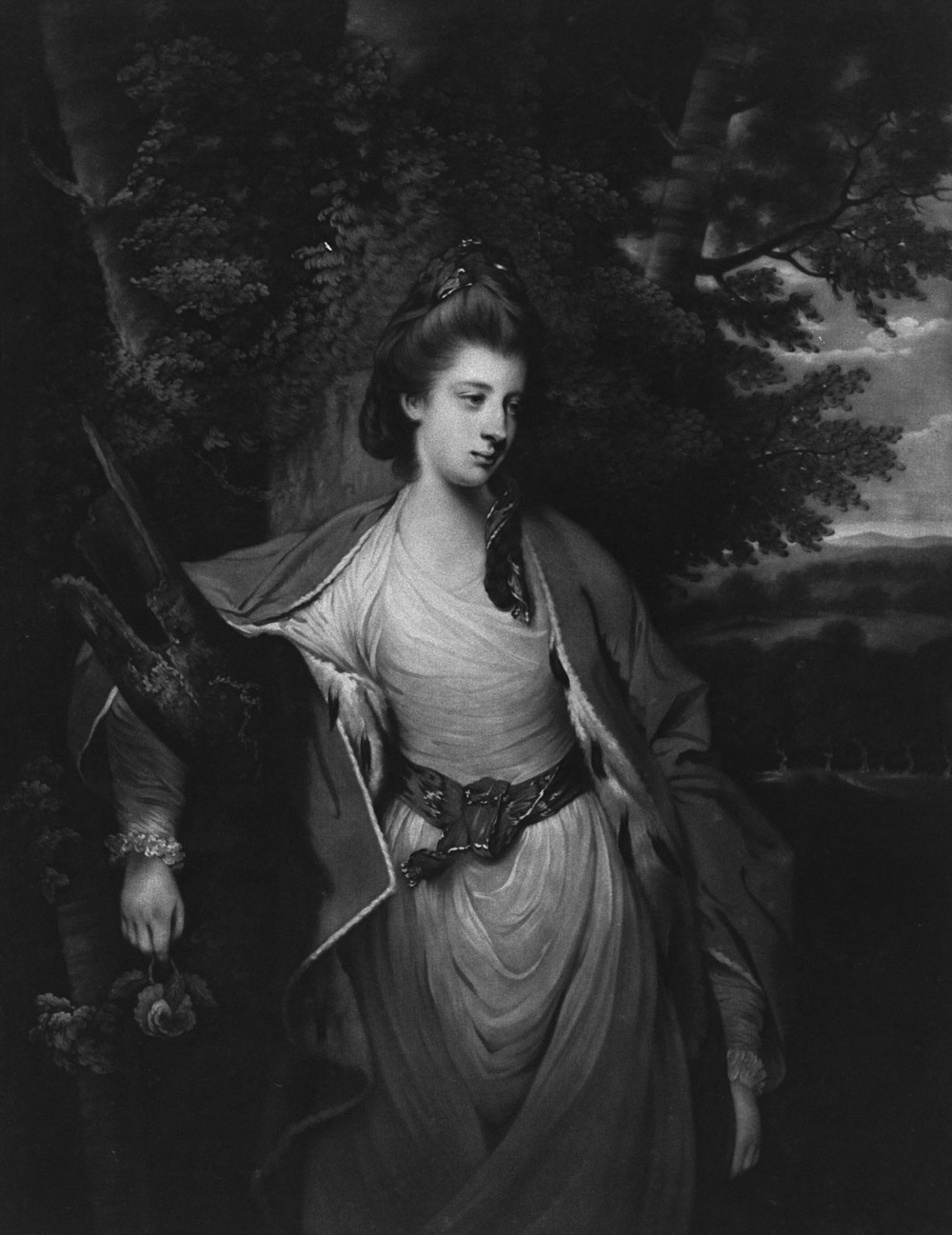The Huntington’s blog takes you behind the scenes for a scholarly view of the collections.
EXHIBITIONS | Out of the Shadows
Posted on Fri., Aug. 12, 2011 by

Lady Caroline, Countess of Carlisle, 1773, James Watson after Joshua Reynolds, mezzotint. Huntington Library, Art Collections, and Botanical Gardens.
Huntington curators call the second half of the 18th century England's "golden age of mezzotint." Invented in the 1600s, the engraving technique was little used until it exploded in popularity in the mid 1700s. It employs a metal plate covered with fine dots, or a "burr," which prints as a deep velvety black. The opposite of traditional engraving methods that apply black ink to a white ground of paper, mezzotint requires the artist to work from dark to light, with the plate's burr scraped down to create lighter tones and bright white highlights, lending the printed image a soft tonality through which light emerges from a dark background.
The textural richness of mezzotints was often compared to oil painting. Painters such as Sir Joshua Reynolds, one of the most prominent 18th century English portraitists, recognized the role they could play in promoting their images and reputations. A new installation in the Works on Paper Room in the Huntington Art Gallery, "Out of the Shadows: Joshua Reynolds' Celebrity Portraiture and the Market for Mezzotints in 18th-century Britain" (on view through Sept. 26) features mezzotints drawn from The Huntington's collections. Reynolds worked directly with engravers to translate his large-scale portraits produced for wealthy clients into smaller, less expensive prints that would reach a wider audience.
These prints ranged widely in quality. In the exhibition, you can see a rich, finely detailed mezzotint of Mrs. Hale juxtaposed with a relatively crude, less expensive version of the picture that lacks all the original background imagery. Thus, Reynolds and printmakers were able to capitalize on the growth of a middle class at various levels, whose interest in celebrity created a market for images of stage stars and society figures.
After you see the mezzotints, you might wander the Huntington Art Gallery looking for examples of the real thing—Reynolds' striking portrait paintings. The Huntington holds dozens of them, including these full-length masterpieces in the Thornton Portrait Gallery: Diana (Sackville), Viscountess Crosbie; Georgiana (Spencer) Cavendish, Duchess of Devonshire; Jane Fleming, later Countess of Harrington; and Sarah (Kemble) Siddons as the Tragic Muse.
Thea M. Page is art writer and special projects manager at The Huntington.